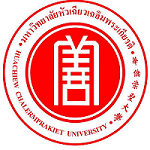Please use this identifier to cite or link to this item:
https://has.hcu.ac.th/jspui/handle/123456789/4773Full metadata record
| DC Field | Value | Language |
|---|---|---|
| dc.contributor.author | Jirisuda Sinthusiri | - |
| dc.contributor.author | Mayura Soonwera | - |
| dc.contributor.author | Cheepchanok Puwanard | - |
| dc.contributor.author | Hataichanok Passara | - |
| dc.contributor.author | Thanaset Thongsaikliang | - |
| dc.contributor.author | Tanapoom Moungthipmalai | - |
| dc.contributor.author | Sirawut Sittichok | - |
| dc.contributor.author | Sumonrat Jintanasirinurak | - |
| dc.contributor.author | จิริสุดา สินธุศิริ | - |
| dc.contributor.author | มยุรา สุนย์วีระ | - |
| dc.contributor.author | ชีพชนก ภูวนารถ | - |
| dc.contributor.author | หทัยชนก พัศระ | - |
| dc.contributor.author | ธนเสฏฐ์ ทองใสเกลี้ยง | - |
| dc.contributor.author | ธนภูมิ ม่วงทิพย์มาลัย | - |
| dc.contributor.author | ศิรวุฒิ สิทธิโชค | - |
| dc.contributor.author | สุมลรัตน์ จินตนาสิรินุรักษ์ | - |
| dc.contributor.other | Huachiew Chalermprakiet University. Faculty of Public and Environmental Health | en |
| dc.contributor.other | King Mongkut’s Institute of Technology Ladkrabang. School of Agricultural Technology | en |
| dc.contributor.other | King Mongkut’s Institute of Technology Ladkrabang. School of Agricultural Technology | en |
| dc.contributor.other | King Mongkut’s Institute of Technology Ladkrabang. School of Agricultural Technology | en |
| dc.contributor.other | Princess of Naradhiwas University. Faculty of Agriculture | en |
| dc.contributor.other | King Mongkut’s Institute of Technology Ladkrabang. School of Agricultural Technology | en |
| dc.contributor.other | Sukhothai Thammathirat Open University. School of Agriculture and Cooperatives | en |
| dc.contributor.other | King Mongkut’s Institute of Technology Ladkrabang, Prince of Chumphon Campus. Department of Agricultural Technology | en |
| dc.date.accessioned | 2025-11-03T07:31:05Z | - |
| dc.date.available | 2025-11-03T07:31:05Z | - |
| dc.date.issued | 2025 | - |
| dc.identifier.citation | International Journal of Agricultural Technology 21,1 (January 2025) :241-250 | en |
| dc.identifier.uri | https://has.hcu.ac.th/jspui/handle/123456789/4773 | - |
| dc.description | สามารถเข้าถึงบทความฉบับเต็ม (Full Text) ได้ที่ : https://li04.tci-thaijo.org/index.php/IJAT/article/view/5170/348 | en |
| dc.description.abstract | The small droplet size could increase the absorbed ingredients and high stability. The star anise nanoemulsion was determined optimum efficacy, with a 1% concentration resulting in the highest knockdown and mortality rate of 100%. Its KT50 and mortality effective values were 28 min and 36 times, respectively. Furthermore, the adult stage of houseflies is found to be susceptible to star anise nanoemulsion. In contrast, cypermethrin was less toxic to it, with a high KT50 and resistance to adult houseflies. Consequently, the star anise nanoemulsion could be developed into an efficient and safe environment for controlling housefly populations. | en |
| dc.language.iso | en_US | en |
| dc.subject | Housefly | en |
| dc.subject | แมลงวันบ้าน | en |
| dc.subject | Star anise | en |
| dc.subject | โป๊ยกั้ก | en |
| dc.subject | Housefly repellent | en |
| dc.subject | การไล่แมลงวันบ้าน | en |
| dc.subject | Turmeric | en |
| dc.subject | ขมิ้นชัน | en |
| dc.subject | Clove | en |
| dc.subject | กานพลู | en |
| dc.subject | Musca domestica | en |
| dc.title | Adulticidal activity of star anise, turmeric, cloves and combinations against houseflies | en |
| dc.type | Article | en |
| Appears in Collections: | Public and Environmental Health - Articles Journals | |
Files in This Item:
| File | Description | Size | Format | |
|---|---|---|---|---|
| Adulticidal-activity-of-star-anise-turmeric-cloves-and-combinations-against-houseflies.pdf | 82.82 kB | Adobe PDF | View/Open |
Items in DSpace are protected by copyright, with all rights reserved, unless otherwise indicated.
